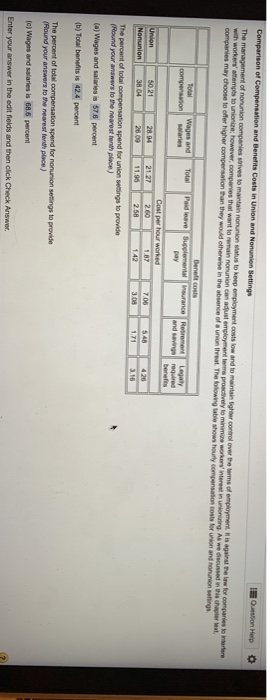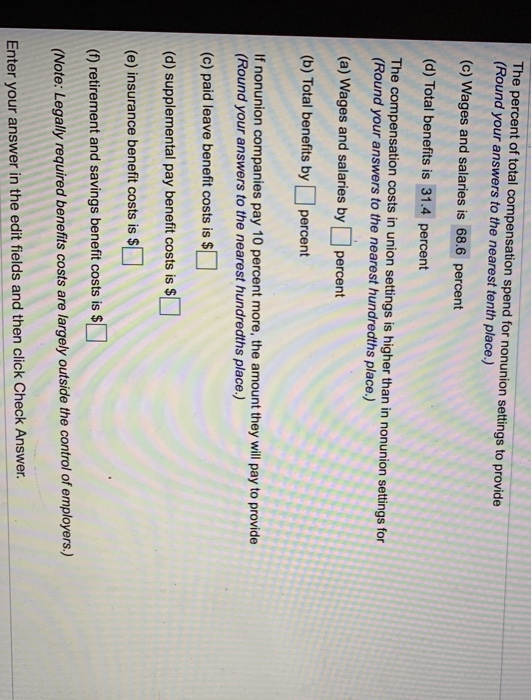Question Help Comparison of Compensation and Benefits Costs in Union and Nonunion Settings The management of norunion companies rives to maintain nonunion was to keep employment costs low and to maintain control over the worms of employment. It is against the low for companies to martere with workers' attempts to unionize, however, companies that want to remain nonunion can adjust employment terme proactively to minimize workers interest in mining. As we discussed in this chapter text companies may choose to offer higher compensation than they would otherwise in the absence of a union treat. The flowing table shows hourly compensation costs for union and onion settings Wages and Total compensation Benefits Padave Supplemental insurance Retirement Legaly pay and saving required benefits Cost per hour worked 260 1.87 7.06 5.48 420 142 3.08 1.71 3.16 50.21 Union Nonunion 3804 28.94 26.09 21 27 11.96 2.50 The percent of total compensation spend for union settings to provide (Round your answers to the nearest forthplace) (a) Wages and salaries is 57.6 percent (b) Total benefits is 42.4 percent The percent of total compensation spend for nonunion settings to provide (Round your answers to the nearest forthplace) (c) Wages and salaries is 68.6 percent Enter your answer in the edit fields and then click Check Answer The percent of total compensation spend for nonunion settings to provide (Round your answers to the nearest tenth place.) (c) Wages and salaries is 68.6 percent (d) Total benefits is 31.4 percent The compensation costs in union settings is higher than in nonunion settings for (Round your answers to the nearest hundredths place.) (a) Wages and salaries by percent (b) Total benefits by percent If nonunion companies pay 10 percent more, the amount they will pay to provide (Round your answers to the nearest hundredths place.) (c) paid leave benefit costs is (d) supplemental pay benefit costs is $ (e) insurance benefit costs is $ (1) retirement and savings benefit costs is $ (Note: Legally required benefits costs are largely outside the control of employers.) Enter your answer in the edit fields and then click Check








